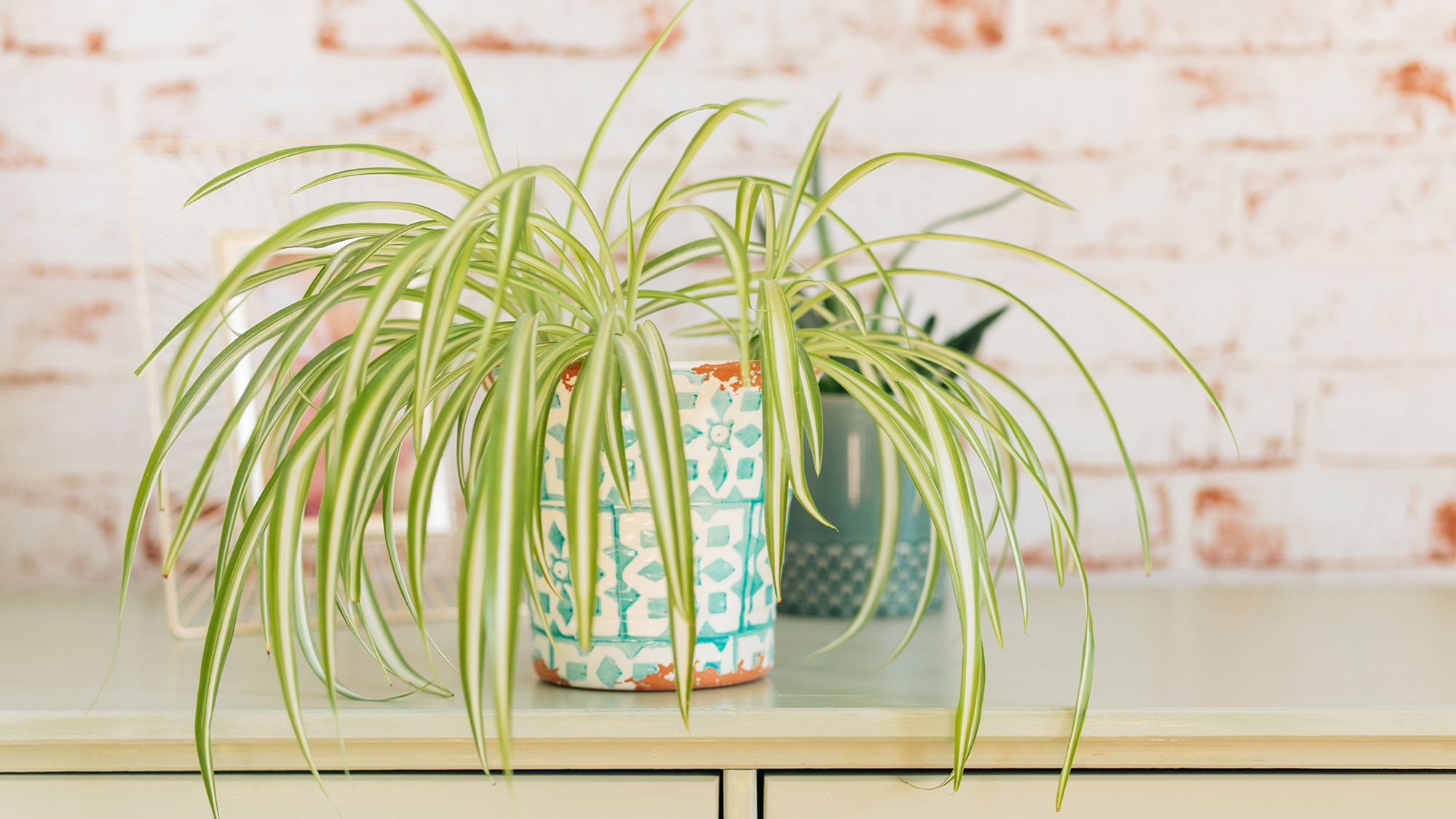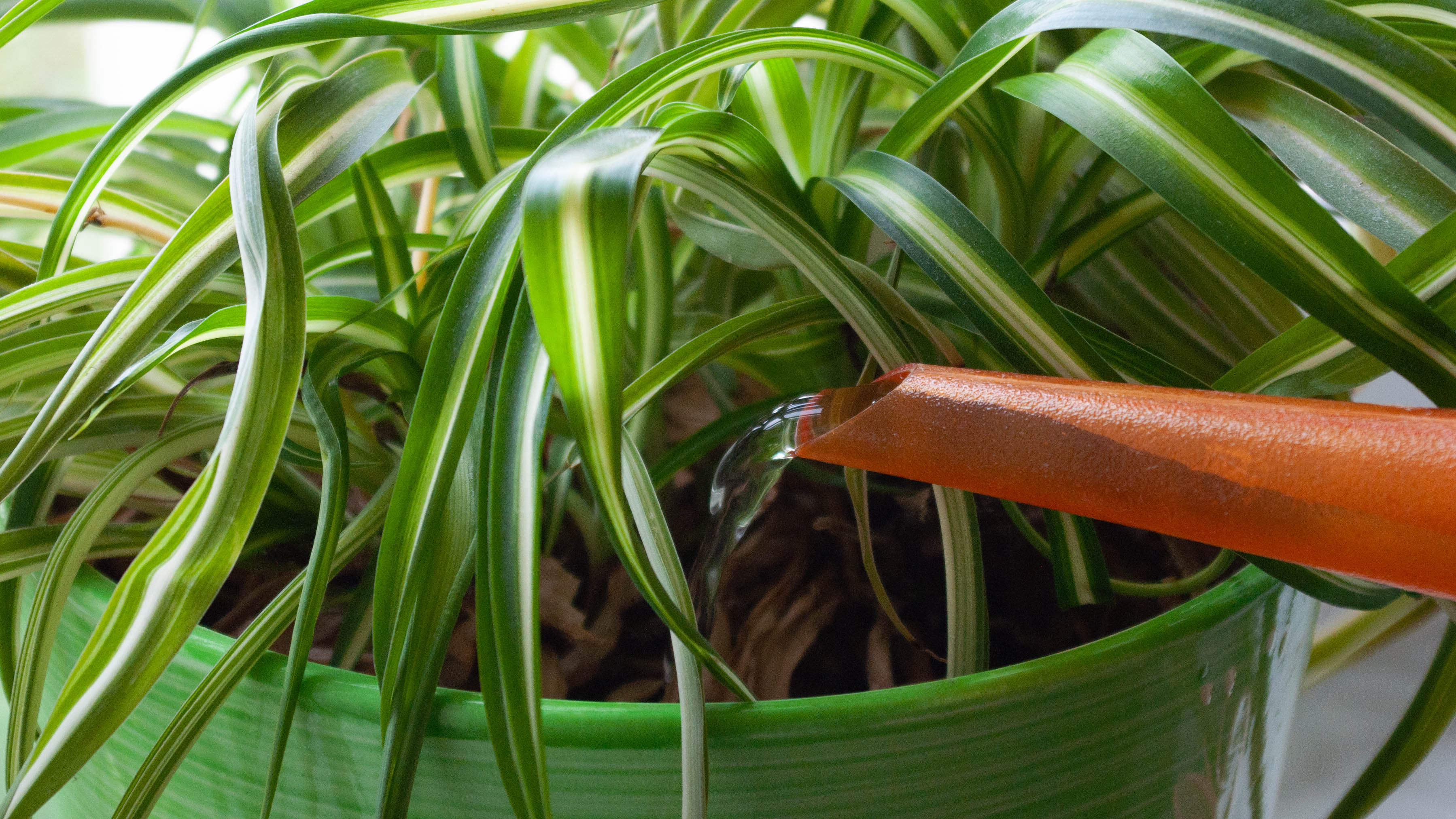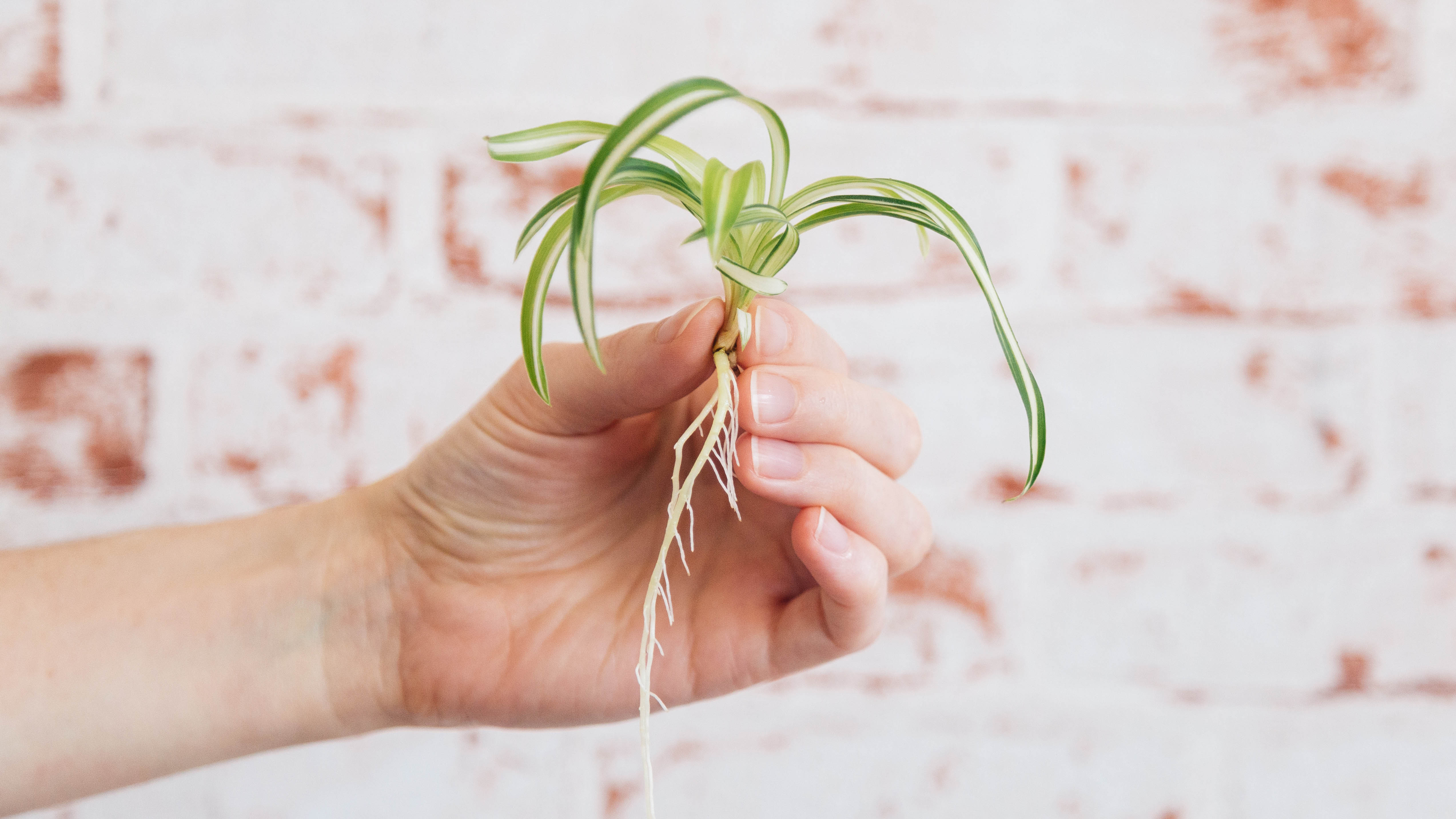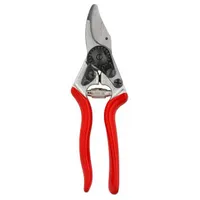The popular houseplant is an air-purifying hero — and it can even tackle mold spores

Houseplants have many purposes in our homes; apart from adding color, texture and even fragrance, they have a few other benefits that you might not be aware of. Besides adding an interesting aesthetic to your interior, some houseplants have superpowers.
And these superpowers include the ability to purify the air and remove toxins — no fancy tech required! In fact, rather than relying on one of the best air purifiers to remove the toxins from your home, you could introduce some of the top-performing air purifying houseplants. And there’s one that does the job better than all the others.
According to NASA tests, the spider plant comes out on top — removing 95% of toxins, including mold spores, which I'm forever trying to banish from my home. And as mold tends to spread during the cold, wherever condensation lurks, it’s a prime time to invest in a few spider plants.

I already knew that the peace lily is an excellent air-purifying plant, making it particularly effective in high-humidity areas such as bathrooms. However, I didn't know about the spider plant’s outstanding qualities. But, considering it already has a superhero named after it, I guess it's fairly obvious!
So, what exactly does the NASA research reveal? After studying about 12 popular ornamental plants to discover their effectiveness at removing key pollutants, associated with indoor air pollution, including mold spores, formaldehyde, carbon monoxide, and allergens, spider plants came out as the best performing plants, as recorded by the National Wildlife Federation and CO2 Meter.
A healthier home
While your spider plant is sitting pretty, it’s working hard to pull all those toxins out of your air.
How does this make your life better? It states that people who keep spider plants at home report better sleep, fewer headaches, clearer breathing, less dry air, and a better mood.
Get instant access to breaking news, the hottest reviews, great deals and helpful tips.
Easy care

The spider plant, otherwise known as Chlorophytum comosum, is recognized by its long ribbon-like leaves that are green and streaked with white or yellow. And when grown indoors, it will reach about 20 inches, according to Patch Plants.
What’s more, spider plants are low maintenance, and even if you don’t have green fingers, there’s not much that can go wrong.
They don’t need much water — a small drink every week is sufficient, and they require even less in the fall and winter. To get the watering right, Patch Plants suggests dipping your finger into the soil up to your second knuckle, and if it comes out dry, your spider plant needs a drink.
Spider plants prefer light, but should be kept out of direct sunlight, so avoid placing them on a sunny windowsill. Placing them on a desktop or a shelf will be just fine. They also do well in a mix of temperatures, so you don’t need to worry when it’s time to up the thermostat.
What's more, spider plants don't need to be pruned or fed, and if your cat or dog takes a bite, you won’t need to rush to the vets, as they are non-toxic houseplants.
The Felco 6 Bypass Pruner is recommended as the best pruning shear in our buying guide, and is a regular favorite among professional gardeners. It is lightweight, gives a consistent performance and has a comfortable ergonomic handle.
How to produce a family of spider plants

Spider plants will produce ‘spiderettes’, so once you’ve got one plant, you could soon have a whole family of little spiders. Simply take a clean pair of scissors or a small pair of the best pruning shears, and snip off the baby plant from the long stem. Then, place the plantlet in a jar of water, ensuring the bottom of the spiderette is covered, but the leaves remain dry.
Place the container in indirect sunlight and wait for roots to form. It can then be planted in a potting mix containing perlite for drainage, and left in indirect sunlight to root.
Even if you haven't had previous success with houseplants, you can't go wrong with a spider plant, and they are super easy to propagate. There's really no reason why you shouldn't introduce a few spider plants to your home to add a touch of greenery and clean your air at the same time.

Follow Tom's Guide on Google News and add us as a preferred source to get our up-to-date news, analysis, and reviews in your feeds.
More from Tom's Guide
- People are being urged to put this one plant in the bathroom to avoid mold this fall — here's why
- 9 ways to prevent mold in your home
- 9 indoor plants that will make your house smell nicer

Camilla is the Homes Staff Writer and covers everything to do with homes and gardens. She has a wealth of editorial experience, mounting over 30 years, and covers news and features, tests products for reviews and compiles buying guides.
Her work has appeared in business and consumer titles, including Ideal Home, Real Homes, House Beautiful, Homebuilding & Renovation, and Kitchen & Bathroom Business. She’s even appeared on the cover of Your Home, writing about her own house renovation.
Although she’s obsessed with decorating her home, she also enjoys baking and trying out the latest kitchen appliances. But when she’s not inside, you’ll find her pottering about in her yard, tending to her vegetable patch or taking in her prized hydrangeas.
You must confirm your public display name before commenting
Please logout and then login again, you will then be prompted to enter your display name.

